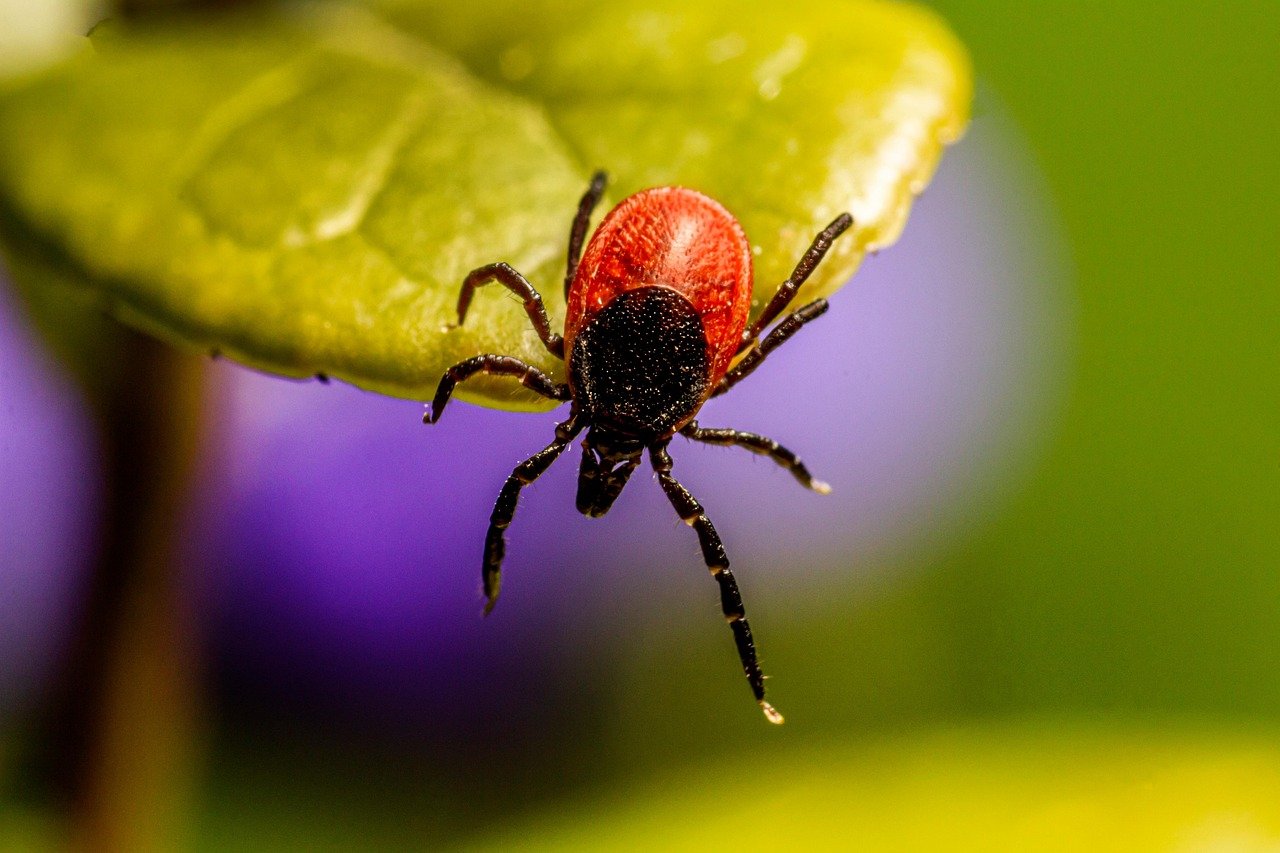New York City is experiencing an unprecedented tick invasion, and our four-legged friends are facing dangers that most dog owners never saw coming. This year’s tick explosion isn’t just another seasonal inconvenience—it’s a full-scale health crisis that’s putting thousands of dogs at risk every single day.
The Shocking Reality: NYC’s Tick Population Has Exploded

Between March and May 2025, tick submissions to research laboratories increased by an astounding 217% compared to the same period last year. This isn’t just a number on a chart—it represents a genuine emergency for pet owners across the city.
The reality is sobering: your dog’s favorite park has probably become a breeding ground for these dangerous parasites. Columbia University researchers made a troubling discovery this spring: approximately 70% of parks surveyed now harbor disease-carrying ticks. This represents a stunning increase from just three years ago when only 40% of Brooklyn and Queens parks showed tick presence.
Climate Change: The Hidden Culprit Behind the Tick Explosion
Spring 2025 arrived with temperatures reaching the comfortable 70s by May, weeks earlier than typical. These warmer conditions, combined with milder winters and extended autumn warmth, have created perfect breeding conditions for ticks throughout the metropolitan area. The science is clear: our changing climate has turned New York City into a tick paradise.
Climate scientists point to these longer warm seasons as a key factor in expanding tick populations, with temperatures above freezing keeping these parasites active nearly year-round. This means your dog isn’t just at risk during traditional “tick season”—they’re vulnerable twelve months a year. Ticks can become active when it is as cold as 36 degrees. Cold winters cause ticks to become dormant, but at first sign of a mild thaw, they can become active and attach to you or your pets.
The Statistics Every Dog Owner Must Know
Recent testing of ticks submitted in 2025 revealed alarming infection rates: 34.8% carried Lyme disease, 11% harbored babesiosis, and 18% contained anaplasmosis. These aren’t just abstract statistics—they represent real threats to your dog’s health and well-being.Between March and May 2025, tick submissions to research laboratories increased by an astounding 217% compared to the same period last year. Dr. Saravanan Thangamani from SUNY Upstate Medical University received 176 tick specimens in just one week of March—a volume he describes as extraordinary for early spring. These aren’t just numbers on a spreadsheet; they represent real risk to families enjoying outdoor activities across our city.
Remarkably, one-third of all ticks tested positive for at least one disease-causing agent, consistent with patterns described in recent New England Journal of Medicine reviews on emerging tick-borne disease trends. Data from the city’s health department shows that Lyme disease cases have also steadily risen. In 2000, there were 215 cases of Lyme disease in the city. In 2020, there were 704 cases. In 2023, there were 3,323 cases.
How Columbia University’s Research is Changing Everything
A project from the Eco-epidemiology lab at Columbia University to better understand the ecology of ticks and the risk of tick transmitted diseases in urban environments. The Eco-epidemiology lab led by Prof. Maria Diuk-Wasser has been conducting several tick-focused research projects in NYC since 2017. Their findings are reshaping how we understand urban tick populations.
Diuk-Wasser, a disease ecologist at Columbia University, had been tracking tick activity in the New York City borough for four years ending in 2021, and found that, year after year, ticks were expanding both in numbers and geographically. “There were many more ticks in more of the parks, and more and more backyards,” Diuk-Wasser says.
Columbia researchers are conducting a major survey to measure urban tick presence and how humans respond to them. In addition to registering participants in the survey, researchers are collecting tick samples in major parks across New York City to understand the prevalence of Lyme carriers in the city’s urban core.
The Deadly Diseases That Could Be Lurking in Your Backyard

Major tick-borne diseases transmitted to dogs in the United States include: • Lyme disease, which comes from the deer tick, can cause stiffness, lameness, swollen joints, loss of appetite, fever and fatigue. Your dog may not show signs of the disease until several months after infected. Canine Ehrlichiosis caused by the brown tick is a common and extremely dangerous tick-borne disease known to infect dogs. Canine Anaplasmosis, also called dog fever or dog tick fever, is transmitted from the deer tick. and Canine Babesiosis typically transmitted by the American dog tick and the brown dog tick. These cause a range of signs and symptoms that can should be diagnosed and treated only by a licensed vet.
Why Your Dog’s Routine Checkup Could Save Their Life
The broad spectrum of possible symptoms associated with tick-borne diseases in dogs (including no symptoms) makes annual screening for tick disease a vital component of your pet’s annual veterinary exam. Tests are fast, with results while you wait. The silent nature of these diseases makes them particularly dangerous.
Experts in the FDA’s Center for Veterinary Medicine say dogs with Lyme disease occasionally develop serious kidney disease that can be fatal. In dogs, the more subtle early stages of Lyme disease often go unnoticed. Even if your dog appears healthy, your veterinarian may recommend yearly screening for Lyme disease, especially if you live in an area where Lyme disease is common and your dog is frequently outdoor
The Game-Changing Tick Prevention Products of 2025
When selecting the right flea and tick preventative for your pup, it’s important to chat with your vet first to determine what makes sense based on their age and health. Oral and some topical preventatives are distributed throughout your pet’s body to give systemic protection. Systemic products are waterproof, safe for your dog or cat, and kill ticks soon after they bite your pet. Tick repellent products such as vests and collars are best when used in addition to a systemic preventative.
The Daily Tick Check: Your Dog’s First Line of Defense
The CDC recommends you check your dog daily for ticks, especially after they spend time outdoors. Pay particular attention to the collar area and around the eyelids, ears, tail, under the front legs, and between the back legs and toes.
Ticks often hide in areas on a dog’s body that are warm and less exposed. Be sure to check under the collar, between the toes, around the ears, and under the tail. Also, inspect the groin area, armpits, and around the eyes. These spots provide ticks with ideal conditions for attachment, as they are harder for dogs to reach and often have thinner skin.
Daily checks to find and remove ticks that are crawling on or biting your pets helps to keep them healthy. It also may prevent crawling ticks from getting onto and biting a person.
The Shocking Truth About Where NYC’s Ticks Are Hiding

Blacklegged ticks (deer ticks) live in Staten Island and the north Bronx. They are about the size of a sesame seed and can spread Lyme disease, anaplasmosis and babesiosis. Lone star ticks live in Staten Island and can sometimes be found in the north Bronx. They are about the size of a pea and can spread ehrlichiosis. They have also been linked with alpha-gal syndrome.
American dog ticks live in all five boroughs of NYC. They are a little larger than the size of a pea and can spread Rocky Mountain spotted fever. “The blacklegged ticks will be present when there is forest and leaf litter, and especially when you go off-trail,” Diuk-Wasser said.
Blacklegged ticks (commonly known as deer ticks) live in shady, moist areas at ground level. They will cling to tall grass, brush and shrubs, usually no more than 18-24 inches off the ground. They also live in lawns and gardens, especially at the edges of woods and around old stone walls.
Your Emergency Action Plan When You Find a Tick
Avoid home remedies, such as applying petroleum jelly or grease or touching the rear of the tick with a hot match. These methods do not work effectively and are not recommended, as they can cause the tick to salivate, increasing the chance of the pet getting a disease.
Avoid touching the tick’s body. Pressure on the tick’s body can cause infectious agents in the tick to enter your pet. Wear gloves. You can contract infectious agents through mucous membranes or breaks in the skin simply by handling infected ticks.
Once the tick has been removed, we recommend using a good tick preventative and having blood testing performed about one month after tick exposure. Most tick-borne illnesses (like Lyme disease) produce antibodies that will be picked up on a blood test 4 weeks after exposure to the tick. If your pet starts to show clinical signs of Lyme disease (as noted below), please call your veterinarian so testing and treatment can be performed sooner.
If you think your dog may have been bitten by a tick and you see changes in your dog’s behavior or appetite, speak with your veterinarian. Watch your pet closely for changes in behavior or appetite if you know or suspect that it has been bitten by a tick. Signs of tickborne disease may not appear for 7-21 days or longer after a tick bite.
Creating a Tick-Safe Environment for Your Dog
Create a barrier to define a tick-safe zone around your yard. Keep grass short and don’t let piles of brush or leaves build up. Trim shrubs and tree branches around your yard to let in more sunlight.
Keep playground equipment and outdoor furniture in a sunny location, away from yard edges and trees. Don’t leave out food that attracts deer and other wildlife. Consider hiring a pest management professional.
In Staten Island, deer-control measures are correlating with decreased cases of Lyme disease. In 2021, the city’s parks department reported a 21% decrease in the deer population due to the vasectomy program. That same year, Lyme cases dropped in Staten Island by 60%.
Conclusion: Be Vigiland and Follow Government Guidelines

The tick crisis facing NYC in 2025 isn’t going away—it’s getting worse. The trend is expected to continue as climate change causes milder winters, making the ticks a year-round menace. But armed with the right knowledge and prevention strategies, you can protect your beloved companion from these dangerous parasites.
Remember, Year-round protection is crucial, although spring and fall are the most heavily populated tick seasons. Spring brings the nymph ticks – no larger than a poppy seed – while the adults tend to be more active in the fall. Don’t wait until you find a tick on your dog—prevention is always better than treatment. To help people understand the tick situation, the New York Department of Health has issued a press release outlining tips and remedies to tackle the situation.

Andrew Alpin from India is the Brand Manager of Doggo digest. Andrew is an experienced content specialist and social media manager with a passion for writing. His forte includes health and wellness, Travel, Animals, and Nature. A nature nomad, Andrew is obsessed with mountains and loves high-altitude trekking. He has been on several Himalayan treks in India including the Everest Base Camp in Nepal.






